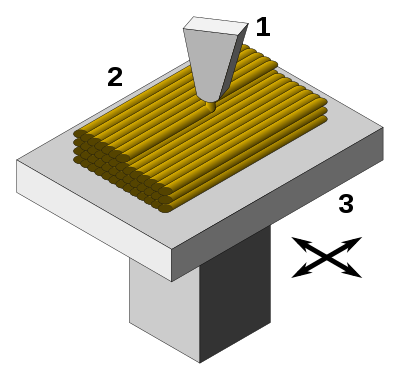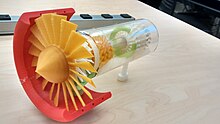An Introduction to 3D Printing
Hi my name is Julie Jolly, I've been in the hobby for more then five years. I am currently printing on six different printers. I have been writing 3D Printer articles for the last three years. In this article on intend on introducing you the reader to this hobby. 3D printers can be overwhelming without some knowledge to start with. So, how do printers work?
Types of 3D Printing
The first method of 3D printing is the most well known, it is Fused deposition modeling (FDM). A plastic filament is melted then extruded through a nozzle in concise lines one on top of each other until the 3D model appears.

Stereolithography (SLA) has been around since 1980's. Considers by most as the messiest of all the methods. The build plate is lowered into a vat of liquid resin. An outline of the layer being printed is displayed on a screen beneath the vat. The imaged is cured and the plate lifts one layer, at which point the next image is display until the entire print is cured onto the build plate. The biggest advantage to the type of printing is the small details that normally can't be printed in FDM.
There are other methods but they are mainly used by big industry in massively expensive 3D printers. In this article I will mainly concentration on printers used in the hobby and not by industry.
What Is It Used For?
Besides fun hobbyists are using it to make money by prototyping. Making parts that could not have been made otherwise. Using it around the house in practical printing projects. Printing cos-play costume parts like swords and helmets. Printing gaming figurines. There are many other used, but these are just a few that people are currently doing.
Types of Printing Materials
ABS
ABS allows printing tough and durable parts that can withstand high temperatures.
Flexible
Referred to as TPE or TPU, the material to easily stretch and bend.
PLA
PLA is the easiest to print in and lowest in cost.
HIPS
HIPS is a lightweight material mostly used as a dissolvable support structure for ABS prints.
PETG
PETG filaments are easily printable, known for it's smooth surface finish, and water resistance.
Nylon
Nylon is a durable, tough and semi-flexible material.
Carbon Fiber Filled
Carbon fiber filaments contain short fibers that are infused into a PLA or ABS base material to help increase strength and stiffness.
Metal Filled
Metal filled filaments are made by mixing a fine metal powder into a base material, providing a unique metallic finish and added weight.
Wood Filled
Wood filaments combine a PLA base material.
PVA
PVA also known as glue stick can be dissolved in water and is often used as a support material.




In January 2001 the American Psychiatric Association was already warning the public public} about Internet gambling. In a public well being advisory, it noted that end result of|as a end result of} online sites aren't regulated, no measures were being taken 바카라사이트 to stop underage gamblers from taking part. It thought-about kids and teenagers, who already play non-gambling video games on the Internet, at significant threat of being lured to gambling sites. It additionally noted that few safeguards were in place to ensure the fairness of the Internet video games or to ascertain precisely who had accountability for working them.
ReplyDelete